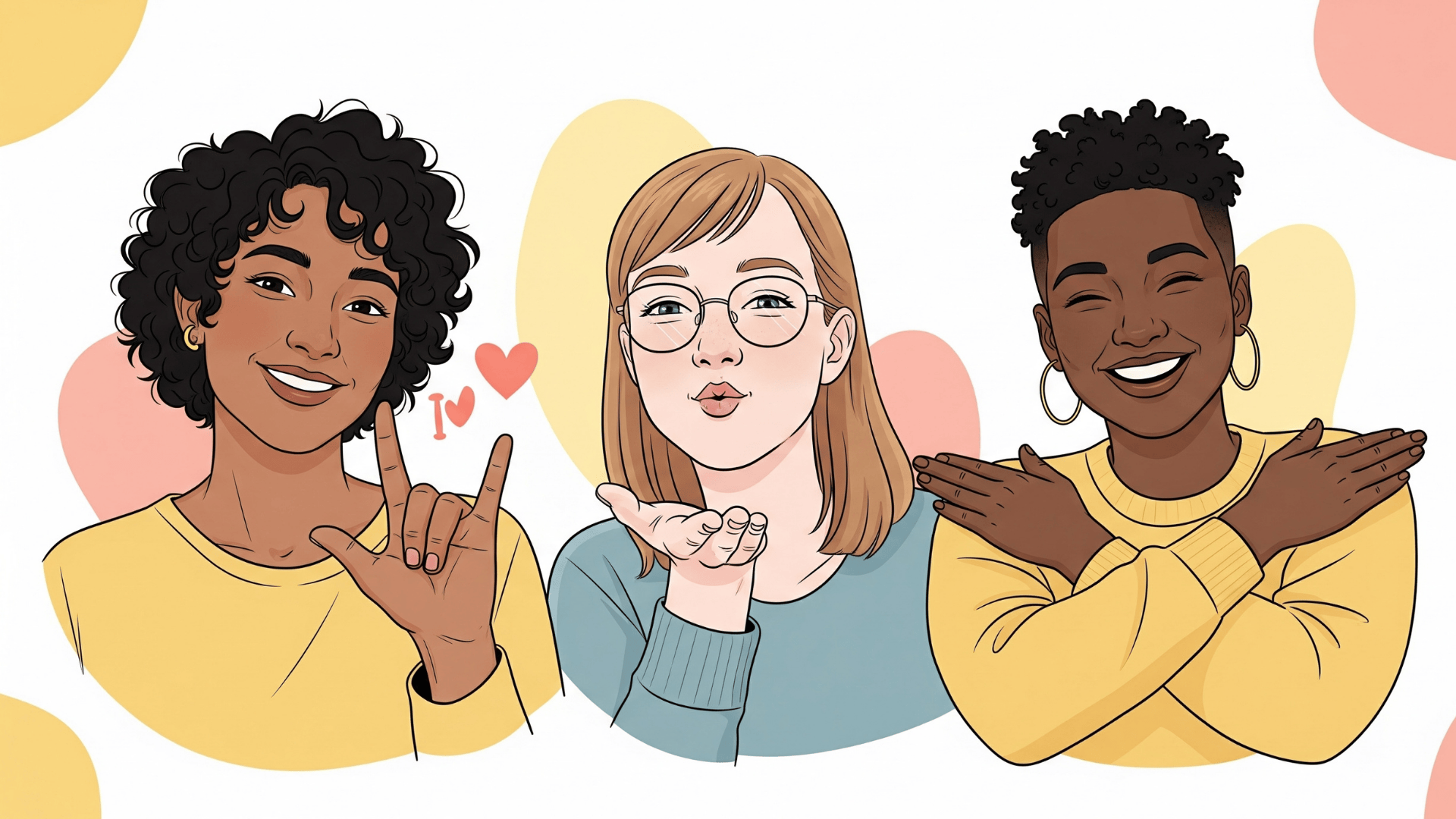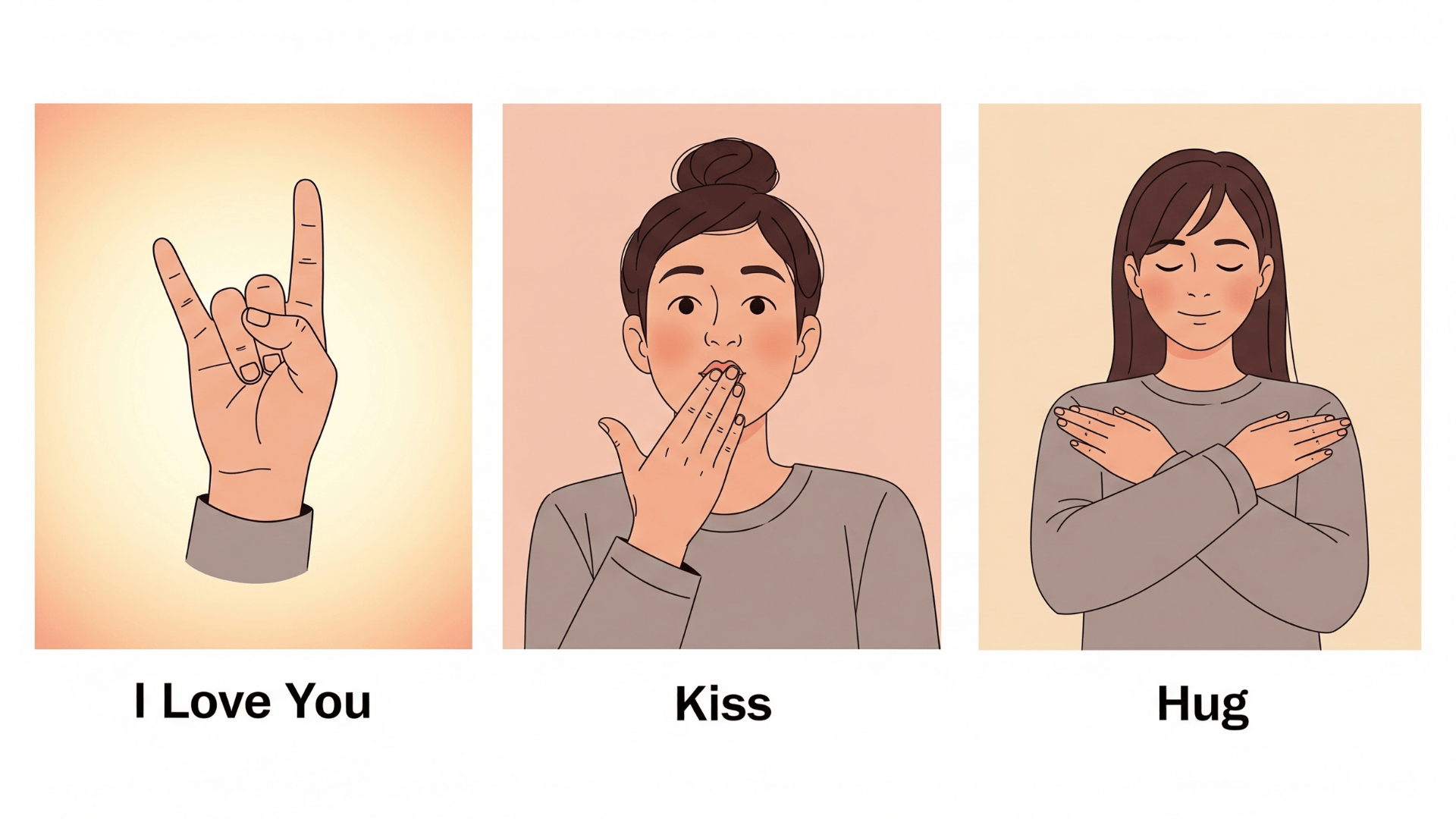I Love You, Kiss, and Hug: How to Sign in ASL for Beginners

Showing affection represents a universal language of connection and care that transcends spoken words and cultural barriers.
In American Sign Language, affectionate signs like “I love you,” “kiss,” and “hug” carry deep emotional meaning while helping bridge communication between Deaf and hearing communities.
Learning these expressions, including understanding responses like “you’re welcome” in ASL, enriches the ability to express feelings visually and demonstrates cultural respect.
Mastering affectionate expressions opens doors to deeper connections and shows genuine interest in ASL as a complete emotional language system that values visual communication and heartfelt expression.
Why Learning Affectionate Signs Matters

Affectionate signs serve as powerful tools for emotional expression that create lasting connections between people.
These gestures demonstrate cultural sensitivity while providing practical ways to communicate love, care, and physical affection across language barriers.
Visual expressions of affection often communicate more effectively than spoken words alone. The physical nature of signing adds emotional depth that voice cannot always convey.
These signs become especially important in relationships with Deaf family members, friends, or romantic partners.
Some signs work better in family settings, while others suit romantic relationships or close friendships. Cultural awareness prevents misunderstandings and shows respect for the Deaf community’s values.
1. How to Sign “I Love You”
The iconic “I Love You” sign combines three letters into one powerful gesture that carries deep meaning in both Deaf and mainstream culture.
This beloved expression represents love, connection, and acceptance across different communities worldwide.
Step-by-step instructions:
|
This widely recognized symbol appears in art, jewelry, and popular culture as a universal expression of love. The sign works for family members, romantic partners, and close friends in appropriate contexts.
2. How to Sign “Kiss”
The kiss sign mimics the natural action of blowing a kiss while maintaining visual clarity for effective communication. Facial expressions play a crucial role in conveying the emotional intention behind this affectionate gesture.
Step-by-step instructions:
|
The puckered lips expression adds emotional context that makes the sign feel genuine and heartfelt. This visual element helps distinguish the sign from similar hand movements with different meanings.
3. How to Sign “Hug”
The hug sign creates a visual representation of a physical embrace that communicates warmth and comfort. This gesture works well for expressing care, comfort, and emotional support in various social situations.
Step-by-step instructions:
|
Variations include holding the position longer for emphasis or pairing the sign with warm facial expressions.
Practice and Learning Resources
Video tutorials provide visual demonstrations that help beginners master proper hand movements and facial expressions.
Educational channels offer step-by-step guidance for affectionate signs while showing cultural context and appropriate usage. These resources supplement in-person learning effectively.
Local ASL groups and online communities offer practice opportunities in supportive social settings.
Consistent daily practice with family members or friends creates comfortable familiarity with emotional expressions.
These fundamental signs build meaningful bonds, express emotions clearly, and often rank together with greetings and farewells, among the first signs taught to beginners because of their warmth and simplicity.
Regular use in appropriate relationships builds confidence while strengthening bonds through visual communication. Patient practice leads to natural, heartfelt singing.
Conclusion
Learning to express affection through ASL creates meaningful connections that transcend spoken language barriers while demonstrating respect for Deaf culture.
The signs for “I love you,” “kiss,” and “hug” provide powerful tools for emotional expression that strengthen relationships and build understanding.
These simple yet profound gestures carry deep meaning that enriches communication between all people.
Each correctly signed expression of love or care contributes to better relationships and greater appreciation for ASL as a complete emotional language system.
Share your experiences and any questions about signing an affectionate message in the comments below!






